Introduction
In the fast-paced world of software development, code quality assurance is essential for ensuring that code meets the highest standards of security and maintainability. It's a meticulous process that identifies and rectifies weaknesses within a codebase, ultimately improving software performance and minimizing the risk of bugs or errors. Take M&T Bank, for example, a longstanding institution that prioritizes "Clean Code" principles to mitigate the high costs and risks associated with software vulnerabilities in the banking sector.
In this article, we explore the benefits and outcomes of code quality assurance, the different types of code review techniques, and the technical aspects involved. We also delve into the importance of code quality standards, best practices for code readability, and the role of documentation in maintaining code quality. Additionally, we discuss the significance of coding conventions and style guides, tools and techniques for code review, and measuring success through tracking metrics.
Finally, we emphasize the importance of fostering collaboration and continuous improvement to achieve high-quality code and create a culture of excellence in software development.
What is Code Quality Assurance?
In the fast-paced world of software development, quality assurance is the linchpin that ensures code is not only functional but adheres to the highest standards of security and maintainability. It's an exacting process that flags and rectifies weaknesses within a codebase, aiming to bolster software performance and minimize the risk of bugs or errors.
Take M&T Bank, an institution with over a century and a half of service, which stands as a testament to the importance of maintaining rigorous coding standards amidst a digital revolution in the banking sector. As they navigate through stringent security and regulatory demands, the bank's commitment to 'Clean Code' principles is a proactive measure against the high costs and risks associated with software vulnerabilities.
In the realm of software testing, misconceptions abound regarding automated, unit, and test-driven development (TDD). To shed light: automated testing is a broad category conducted by specialized software without manual intervention, encompassing a spectrum of tests for different scopes and metrics. Within this domain, unit testing zeroes in on the smallest units of code, which can be tested at any stage of the development cycle. Meanwhile, TDD is a progressive approach where tests precede code creation, setting a quality benchmark from the outset.
The Morning Brew, a .NET development blog, and Veracode's State of Software Security report illustrate the dire consequences of neglecting software quality — from exposing millions to security threats to highlighting the critical need for standardized vulnerability assessment metrics like CVSS v3.1.
In this climate, software testing is non-negotiable. It's a meticulous process that ensures software behaves as expected and complies with requirements, ultimately serving to detect and mend bugs that, if ignored, could escalate into larger failures. Statistics from AI pair-programming tools reinforce the notion that such testing not only enhances productivity but also contributes to a more enjoyable and less cognitively taxing development process.
Industry thought leaders echo the sentiment that software security is critically linked to code quality. As governments and organizations start to craft stringent regulations, the push towards memory safe programming languages is just one example of the measures being taken to secure the software that our society increasingly relies upon.
With such high stakes, it's clear that software testing and quality assurance are more than just steps in the development process; they are integral practices that safeguard the integrity and reliability of the digital infrastructure upon which modern society is built.
Benefits of Code Quality Assurance
A comprehensive Code Quality Assurance (QA) strategy is indispensable in software development for ensuring that applications are reliable, maintainable, and error-free. It involves a systematic approach to detect and address defects before software release. For instance, M&T Bank, with its longstanding heritage and commitment to innovation, has established Clean Code standards to maintain software quality amidst the digital transformation of the banking sector. This proactive stance is crucial given that software issues in banking can lead to significant security and financial risks.
Software quality is defined by its ability to meet user requirements and specifications. Verification during QA confirms that the product is being built correctly, using techniques such as requirements review and design verification. Automated Testing and Test Driven Development (TDD) are modern methods that offer substantial ROI by ensuring software quality efficiently, shifting the perception of QA from a cost burden to a value-add process.
The importance of code quality is underscored by studies showing the correlation between module size and error proneness, and by research on the evolution of modern code review practices. Furthermore, recent security incidents, like the exploitation of the PaperCut software vulnerability affecting numerous global organizations, highlight the critical need for robust software testing to prevent widespread damage.
In today's fast-paced software development landscape, QA teams must balance the demands of speed, functionality, and quality. Incorporating Unit Testing and Integration Testing at different stages can help catch issues early, reducing long-term costs and ensuring a more reliable product. By prioritizing software quality assurance, organizations can not only improve their product's reliability but also enhance customer satisfaction and market reputation.
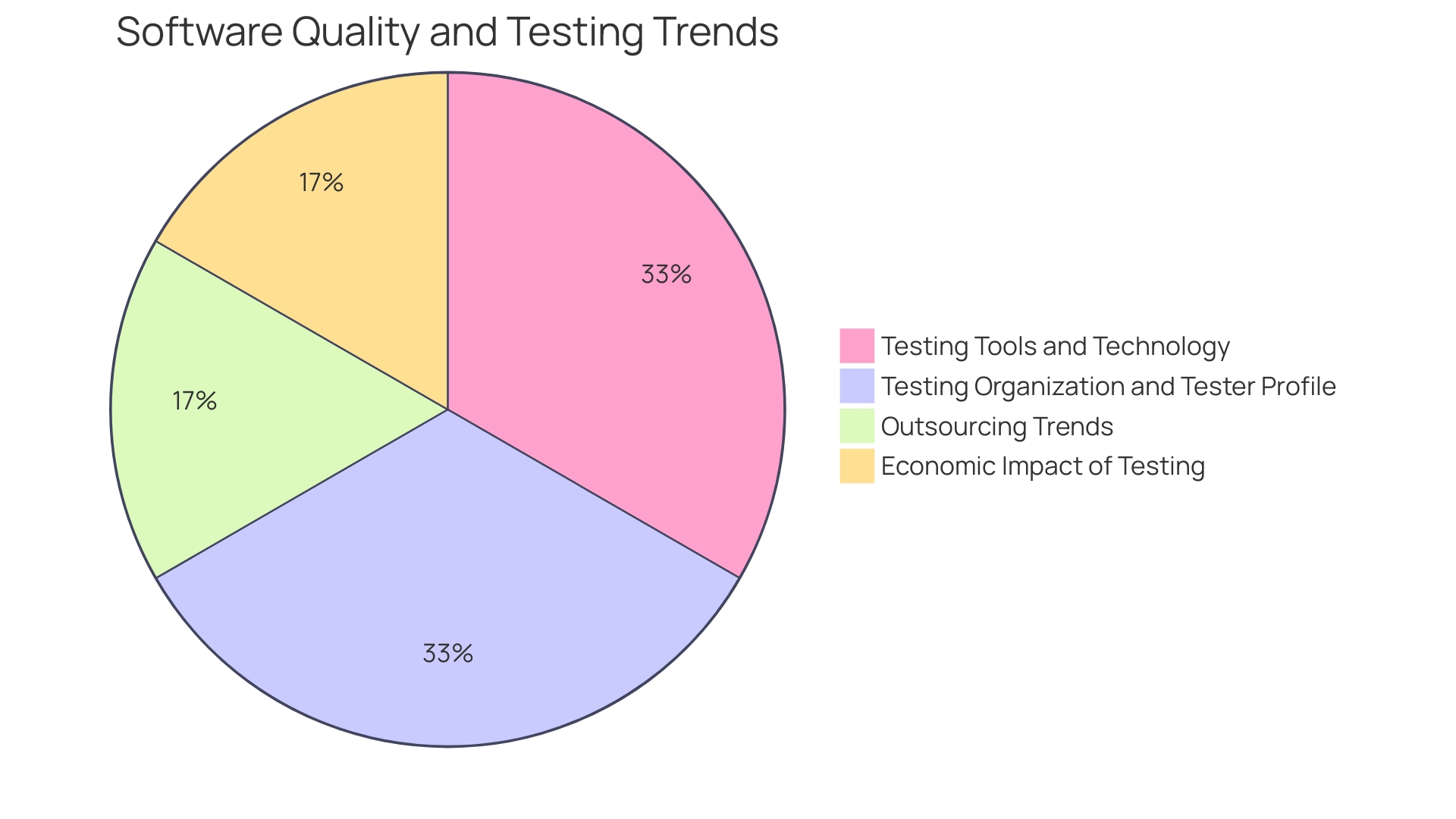
Types of Code Review
Quality assurance in software development encompasses various code review techniques to ensure the highest standards are met. Here are some of the key methods used:
-
Peer Code Review:
- Every line of code benefits from a fresh pair of eyes, and peer review is the practice of having another developer scrutinize the code for potential errors and areas for enhancement. It's a collaborative exercise where developers share knowledge and learn from each other, fostering an environment of continuous improvement.
-
Automated Code Review:
- Utilizing tools and software, automated code review systematically analyzes the codebase for issues such as code complexity, adherence to coding standards, and potential bugs. It's like having an ever-vigilant robot assistant that tirelessly checks your code, offering a level of consistency and speed that manual reviews can't match.
-
Formal Code Inspection:
- This method is a systematic and rigorous approach where a team of developers convenes to dissect the code, focusing on predefined quality parameters and standards. It's akin to a surgical team performing a critical operation, where precision and adherence to procedure are paramount.
Recent advancements in AI with tools like GitHub Copilot and ChatGPT have made waves in the realm of code generation, yet the code review process has largely remained traditional. Despite the unchanged nature of code review, it's an art that, when fully leveraged, can yield significant benefits beyond the discovery of bugs. It's about embracing a collective responsibility, where diverse perspectives converge to refine and elevate the quality of the code.
In the dynamic landscape of software development, methodologies evolve, and the introduction of AI in code review is reshaping the field. The interplay between human expertise and Ai's capabilities is creating a new frontier, raising questions about the future of code review and the roles of developers and researchers in this changing ecosystem.
By incorporating these techniques, developers can ensure a robust code review process that takes advantage of both human insight and the efficiency of automation, ultimately leading to software that stands the test of time and satisfies the rigorous demands of users and stakeholders.
Technical Aspects of Code Review
Code review is not merely a routine task; it's a critical examination of the codebase to ensure the software's quality and effectiveness. The process involves meticulous analysis of code readability, maintainability, performance, and security. It also checks for conformity with the predefined coding standards and best practices. A robust review delves into whether functions and variables are aptly named to clearly indicate their purpose and content, resonating with the adage that while naming may be challenging, imprecise names only add to the complexity.
Developers during the review must ask probing questions: Is the code written in an expressive manner allowing others to understand its functionality effortlessly? Do function names accurately describe their outputs, and do variable names reflect their stored values? The code must be dissected to check if complex functions are decomposed into smaller, comprehensible segments, ensuring that even the most intricate operations maintain clarity and simplicity.
Effective code reviews are not isolated events but involve the entire development team. Each team member's unique perspective on code and differing expectations from the review process contribute to a comprehensive assessment. This collective effort is underpinned by a well-defined set of coding standards that cover naming conventions, formatting styles, and commenting practices, leading to more consistent and less error-prone reviews.
In the contemporary software development landscape, the significance of a Software Bill of Materials (SBOM) for software supply chain management cannot be overstated, especially with the rise of AI coding tools. The OSSRA report underscores the critical question: Do you know what's in your code? With an overwhelming percentage of applications now incorporating open source components, understanding the origins and attributes of the code becomes paramount. The staggering average of 526 open source components per application highlights the necessity of automated security testing, which is indispensable for managing the sheer volume of components that manual testing cannot feasibly address.
In conclusion, a thorough code review is an artful blend of technical scrutiny and collaborative dynamics. It serves multiple objectives, from refining code quality to identifying bugs and upholding best practices, all while fostering an environment of continuous learning. By embracing these principles, teams can elevate their code review process into an instrument of excellence in software development.
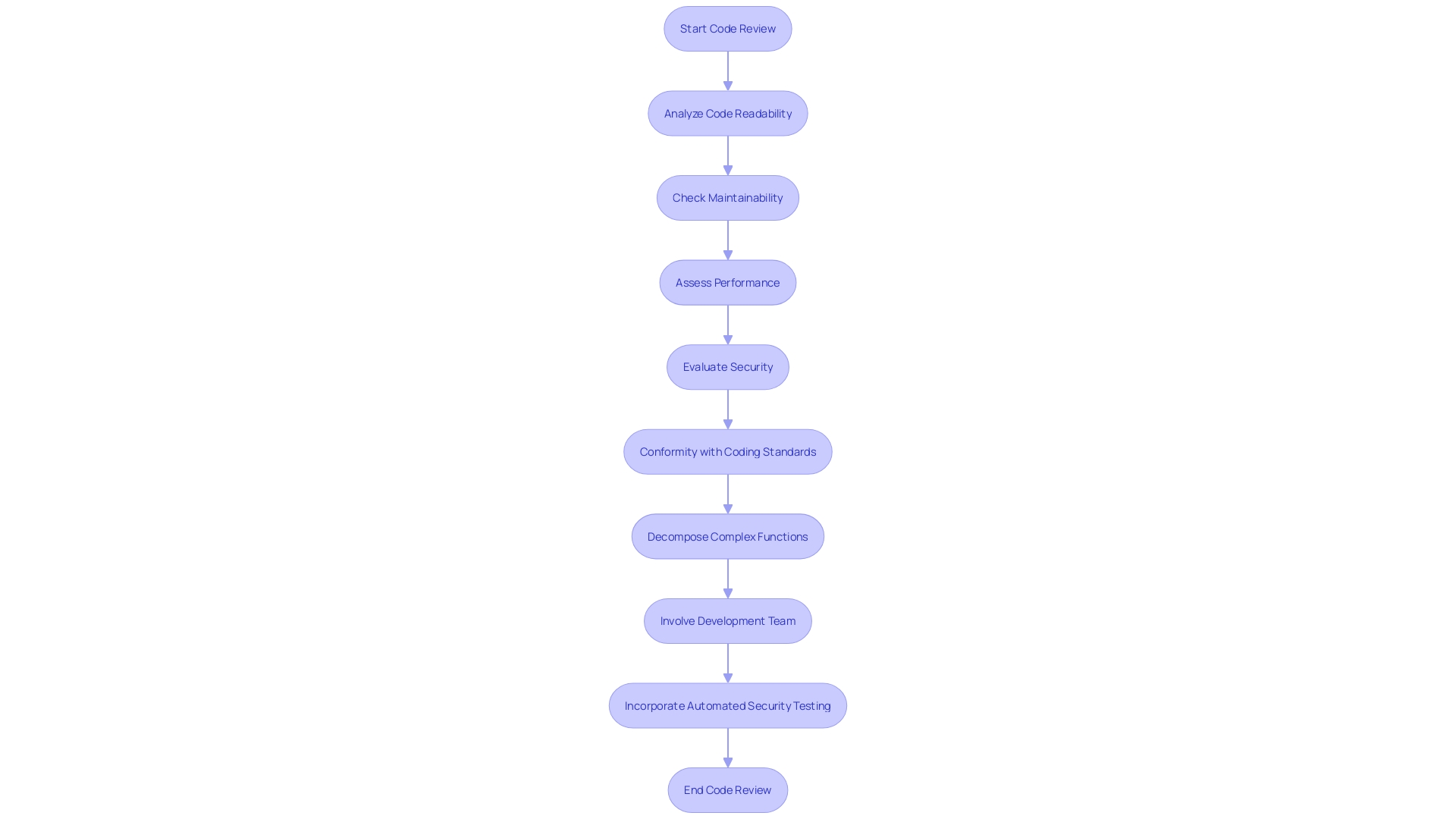
Code Quality Standards
Code Quality Standards are the backbone of successful software development, guiding developers through a meticulous framework of rules and practices ranging from code formatting and naming conventions to error handling and security protocols. In the realm of banking, where digital transformation is accelerating at a breakneck pace, these standards are more than just guidelines; they're essential for security and regulatory compliance. M&T Bank, with its storied history and commitment to innovation, has exemplified this by crafting its own Clean Code standards to bolster software maintainability and performance.
The necessity of code quality is further underscored by the increasing reliance on software in our daily lives. As governments worldwide craft new regulations to safeguard against cyberattacks, the importance of secure, high-quality software has never been more pronounced. The White House ONCD's recent report advocating for memory safe programming languages is a testament to this urgent need.
The significance of code quality extends beyond mere compliance; it's about mastering a language of collaboration that sets you apart in the corporate coding world. It's not just about making code work; it's about crafting software that excels in the eyes of those who know it best. In this exploration, we delve into Java and Python examples to demonstrate how adhering to coding standards can be your compass to success in the ever-evolving corporate software landscape.
As we navigate the intricate ecosystem of software development, it's clear that the quality of our code is inseparable from the overall quality of our software products. The interplay between process and code quality, as outlined by research and expert commentary, shapes system quality in ways that are complex and often challenging to measure. Yet, the pursuit of quality is non-negotiable, for it is the foundation upon which reliable, secure, and efficient software is built—a truth that resonates across all domains of software work.
Best Practices for Code Readability
Crafting readable code is more than a best practice; it's a critical component in fostering effective maintenance and teamwork. To elevate code readability, consider these strategies:
- Opt for descriptive variable and function names that reflect their roles clearly. This principle can be likened to an artist selecting the perfect hue for a painting, where the name serves as a beacon of understanding for those navigating the codebase.
- Simplify complex logic by segmenting it into smaller, self-contained functions or methods, adhering to the Single Responsibility Principle (SRP) for focused functionality.
- Implement clear, succinct comments to guide future developers through the code's purpose and logic, facilitating a conversation through the code itself.
- Reduce code duplication by leveraging abstractions and creating reusable components, which echoes the DRY principle and enhances maintainability.
- Maintain uniform indentation and formatting standards, which not only streamlines the visual structure but also minimizes cognitive overhead for developers.
Embracing these practices aligns with the ethos of 'humane code,' a concept championed by Mark Seemann, which posits that code is essentially a dialogue among developers. This dialogue aids in decreasing complexity and promotes sustainable development rhythms.
Moreover, following a well-established coding convention, such as Microsoft's for C#, can expedite consensus and ensure uniform application. While initial discussions may be time-consuming, they are crucial for clarity and long-term efficiency.
In the realm of JavaScript, which is indispensable for creating dynamic and interactive web experiences, the mastery of clean code is paramount. This mastery not only enhances individual skill sets but also proves significant in collaborative scenarios, such as remote teams navigating increased meetings and seeking to maintain short-term agreements.
Statistics from GitHub's research on AI and software development indicate a shift in code quality dynamics. With Ai's growing influence, there's an increase in code churn and a decrease in reuse, pointing to the need for vigilance in upholding code quality standards. These insights underscore the importance of monitoring AI's impact on code quality and adapting strategies accordingly.
Ultimately, achieving high-quality code is not merely about functionality; it's about articulating a clear, maintainable, and efficient narrative that stands the test of time and team transitions.
Importance of Coding Conventions and Style Guides
In the realm of software development, coding conventions and style guides are the backbone of a high-quality, maintainable codebase. They are the unwritten law that governs the structural and stylistic aspects of coding, from the intricacies of formatting to the philosophy behind naming conventions. At their core, these guidelines serve to forge a common language among developers, facilitating a seamless collaboration and comprehension of the code written by peers.
M&T Bank, a venerated institution in the banking industry, serves as a prime example of an organization that has embraced the digital revolution, recognizing the indispensable value of coding standards. With the digital landscape evolving rapidly, M&T Bank has taken significant strides to implement Clean Code standards across its development team. This strategic move aims to uphold the software's maintainability and enhance performance, pivotal factors in an era where the security of sensitive data and transactions is paramount.
As developers, the pursuit of clean code should be relentless. It entails crafting code that is not just readable, but also reduces complexity to its bare minimum. This approach is not merely about adherence to rules; it's a commitment to quality that elevates one's work to meet the discerning standards of the corporate realm. Whether you're a seasoned professional in Java or Python, or a newcomer eager to make your mark, understanding and implementing coding standards is akin to navigating the corporate software landscape with a compass, one that invariably leads to success.
Consider the DRY (Don't Repeat Yourself) principle, which advocates for a reduction in code redundancy. Take a JavaScript application tasked with calculating the total cost of items in a shopping cart. If the logic to calculate the cost is replicated across multiple functions for different item types, it violates this principle. By centralizing this logic, we not only honor the DRY principle but also simplify future modifications.
In the end, the quest for clean code is about writing code with intention and clarity, where each variable and function name is a clear indicator of its purpose. It's about shaping a codebase that is not just functional but exemplary, standing the test of time in the fast-paced, ever-evolving world of technology.
Using Code Review Checklists
Code review checklists are essential for performing methodical and meticulous assessments of code quality. Encompassing a range of criteria, these checklists guide developers in scrutinizing code for compliance with coding norms, robust error management, performance enhancements, security protocols, and thorough documentation. These lists are particularly useful in ensuring that no vital aspect is missed during code evaluations.
Reinforcing this practice, AI-based pair-programming tools, like GitHub Copilot, have been instrumental in elevating developer productivity across all experience levels. These tools suggest code snippets in real-time, reducing task time, diminishing cognitive load, and enhancing both the enjoyment and the educational aspects of coding. The integration of AI in coding not only improves individual productivity but also aids in maintaining code quality through consistent and accurate suggestions.
Moreover, the necessity of code review transcends the confines of programming languages. Whether it's R, Python, or any other language, the key principles of code review remain universally applicable. These include the 'four Rs': ensuring that the code matches the methods described, runs successfully, is reliable, and produces replicable results. Such thorough reviews can prevent a myriad of errors and are essential at every stage of the development lifecycle, from pre-submission to post-publication.
The significance of software code quality and security is now recognized at the highest levels, with governments worldwide developing standards to safeguard against cyber threats. The recent report by the White House Office of the National Cyber Director emphasizes the urgency for memory-safe programming languages to bolster software security—a testament to the growing need for high-quality, secure software.
Experts in the field have emphasized the importance of clear objectives and standardized coding practices for effective code reviews. These standards streamline the review process, making it more consistent and less prone to errors from individual coding styles. As Grace White aptly puts it, programmers seek autonomy over their work, and this extends to the desire for a flexible and efficient code review process that complements their workflow.
In summary, code review checklists, supported by AI tools and guided by well-defined standards and objectives, play a pivotal role in the creation of secure, high-quality software. This is vital as both businesses and consumers increasingly rely on software in their daily lives, and as the industry faces more stringent government regulations around code security.
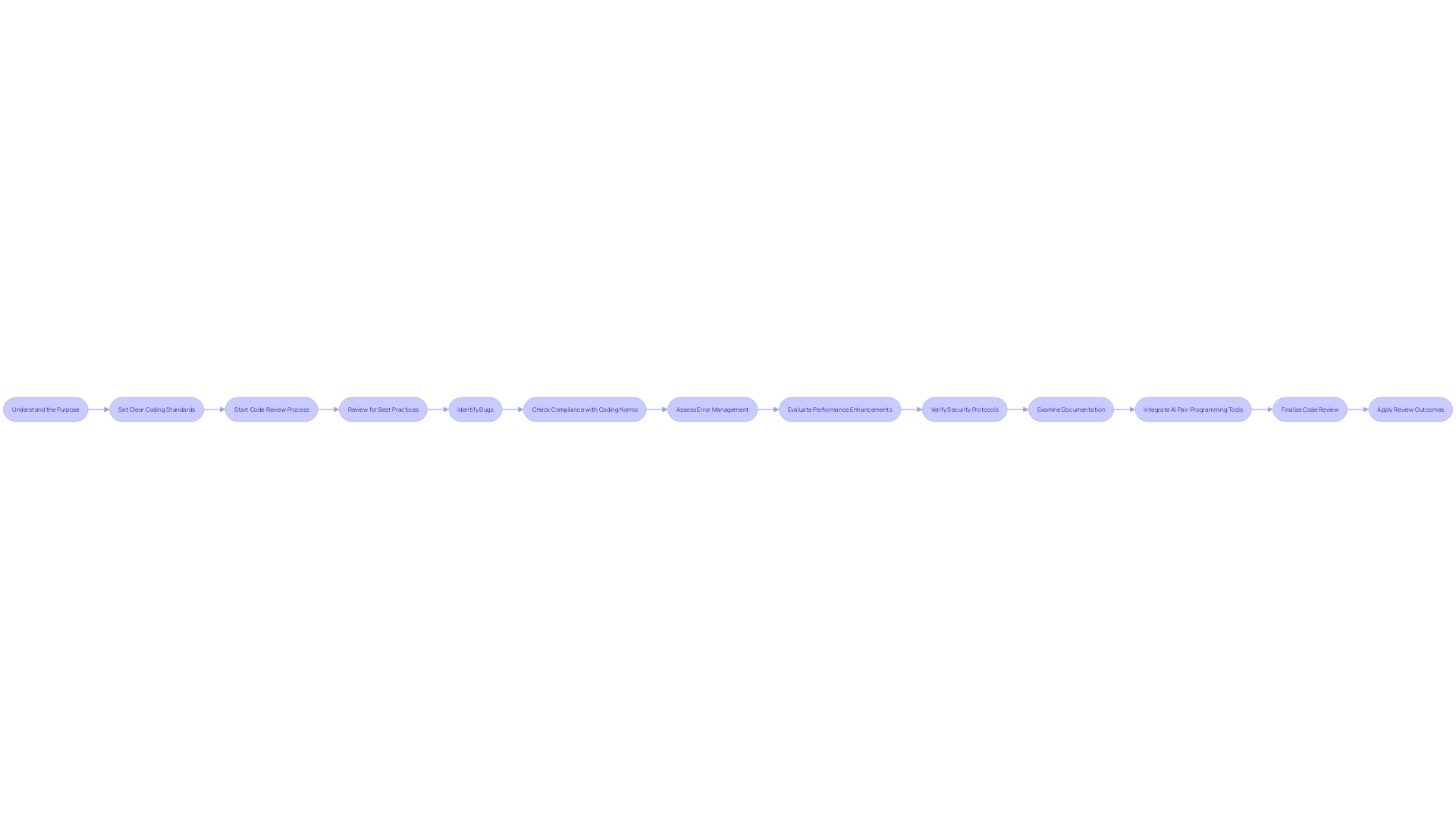
Ensuring Code Security and Error Handling
Ensuring software security and implementing effective error handling are not just good practices; they are essential for maintaining the quality and reliability of any application. Developers must take proactive steps to safeguard against cyber threats, which are becoming ever more sophisticated. This involves more than just writing code; it requires a mindset of vigilance and a commitment to security principles, such as validating user inputs to prevent the injection of malicious data, encrypting sensitive information to safeguard privacy, and adhering to secure coding standards that act as a first line of defense against potential attacks.
In addition to security, error handling is a fundamental component of resilient software. Rather than coding only for the 'happy path,' developers need to anticipate and gracefully manage exceptions and edge cases to prevent application crashes or potential security vulnerabilities. This can be seen in the hard-earned lessons from industry professionals, such as those chronicled in the case of a Microsoft engineer uncovering a backdoor in Linux software, highlighting the need for constant vigilance.
Moreover, the recent discoveries around the manipulation of the Unicode bidirectional algorithm (Bidi) underscore the importance of thorough code reviews and quality checks to identify hidden malicious code that could compromise software integrity. Incorporating regular security training into the developer's routine can significantly enhance code security, as it equips them with the knowledge of current threats and best practices.
It is crucial to remember that every line of code could be a potential entry point for an attacker. Therefore, when considering what to log, developers should always weigh the importance of the information against the potential security implications. By fostering a proactive security culture and applying a rigorous approach to error handling, developers can create more secure and reliable software, thus ensuring trust in the technology that increasingly underpins our modern world.
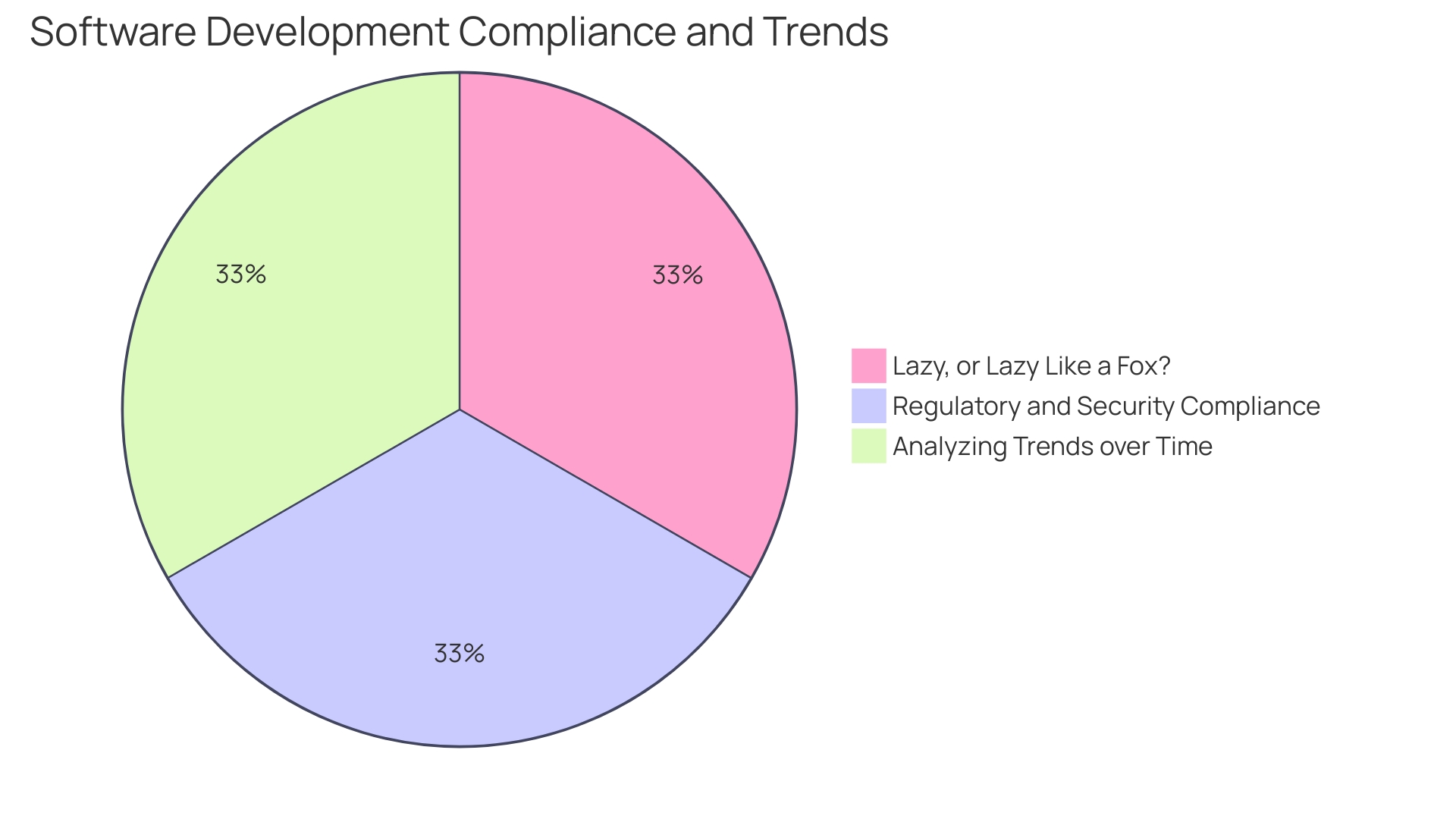
Role of Documentation in Code Quality
The importance of documentation in software development cannot be overstated, particularly when considering the intricate and regulated nature of industries like banking. For instance, M&T Bank, with its 165 years of service and over 21,000 employees, has faced the challenge of digital transformation head-on by establishing organization-wide Clean Code standards. These standards are imperative for maintainability and performance, especially in a sector where security breaches or financial losses can be devastating.
Code documentation, which includes written text, comments, or other supplementary materials, is essential in helping developers, users, and other stakeholders understand a software's functionality and design. For example, the README file is fundamental, serving as the project's front door for collaborators, contributors, or users. This file should include a clear and comprehensive project overview, thus enabling efficient collaboration and comprehension.
Moreover, advancements like AI pair-programming tools have had a significant impact on developer productivity. GitHub's research indicates that AI suggestions can benefit all skill levels, with junior developers seeing the most significant gains. These tools often predict and fill in code snippets, enhancing productivity across various aspects, from reducing cognitive load to improving code quality.
In terms of establishing effective documentation, it's important to create clear, concise, and relevant materials. Redundant or unclear documentation can be more of a hindrance than an aid. For example, test cases should be well-defined, with each serving as a standalone unit that outlines the necessary steps to evaluate a software program's specific element. These include identifiers and priority levels, which help in tracking and assessing the severity of each case.
Meticulously documented code not only eases the onboarding of new developers but also aligns with the need for rigorous standards and compliance in highly regulated industries. As we head into a new era of software development, influenced by AI tools like GitHub Copilot, it is crucial for technical leaders to be vigilant about the changes in code quality, including increases in churn and decreases in code reuse. Understanding and measuring the impact of AI on code quality is vital for maintaining high standards and ensuring that the codebase remains robust, secure, and efficient.
Fostering Collaboration and Continuous Improvement
In the realm of software development, code quality is not just a goal but a journey that involves consistent collaboration and a commitment to perpetual improvement. In the context of M&T Bank's initiative to establish organization-wide Clean Code standards, we understand the importance of fostering an environment where developers are not just coding in isolation but are actively participating in code reviews and knowledge sharing workshops. Such practices are essential, particularly in the banking sector where digital transformation is intensifying the need for secure and compliant code to protect sensitive data and transactions.
The art of code reviewing cannot be overstated. It's a practice that should involve the entire team and be approached with an understanding that every developer has their own perspective on code quality and review processes. Healthy and constructive critique plays a vital role in this process, allowing for the identification of improvement opportunities and thereby promoting continuous learning and advancement within the team.
Moreover, with governments and regulatory bodies increasingly focusing on the quality and security of software, as highlighted by the recent White House ONCD report, the significance of collaboration in achieving and maintaining high code standards becomes even more pronounced. This collective effort towards clean and secure code not only meets the evolving regulatory demands but also mitigates risks associated with cyberattacks—a concern that is common and costly.
Therefore, by embracing a culture that values the sharing of insights and constructive feedback, development teams can significantly improve not only the quality of their codebases but also ensure that their software remains efficient, reliable, and secure in the face of rapid technological advancements and stringent security requirements.
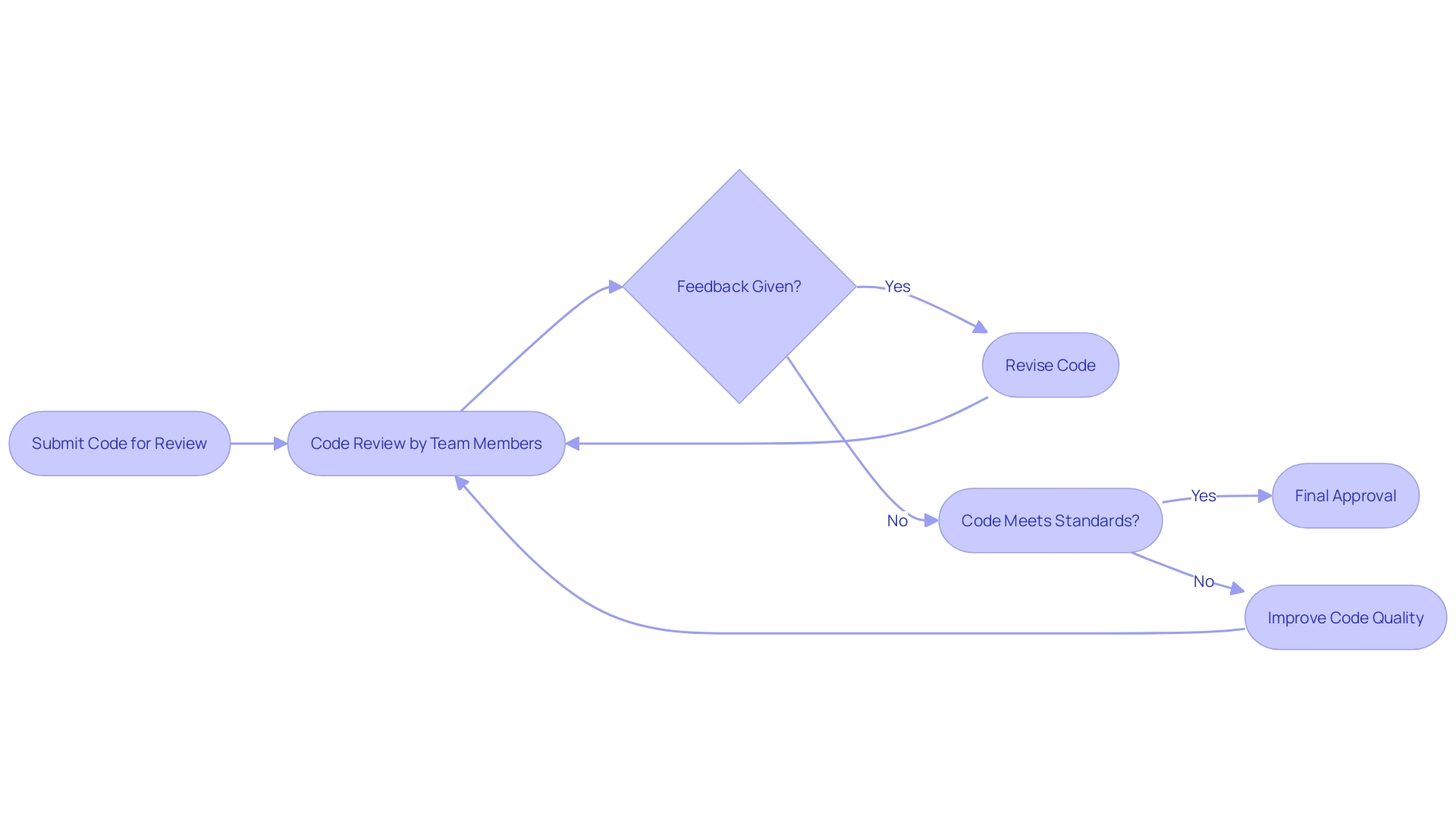
Tools and Techniques for Code Review
To enhance software quality, developers utilize a variety of tools and methodologies for effective code analysis and review. Among these, automated code analysis tools stand out by scrutinizing the codebase for complexity, adherence to coding standards, and potential vulnerabilities. Version control systems, such as Git, offer a collaborative platform where developers can annotate and discuss code modifications, fostering a transparent review process.
Additionally, code review checklists serve as a vital instrument to ensure thoroughness by providing specific criteria and questions to assess the code against. An example of success in this area is M&T Bank, which has set a precedent in the banking industry by establishing Clean Code standards to ensure maintainability and performance of their software in the face of stringent security and regulatory demands.
Pair programming, where two developers work in tandem on the same code, allows for an ongoing, dynamic review process. This method not only enhances code quality but also facilitates knowledge sharing and reduces the likelihood of critical mistakes.
As the industry evolves with AI advancements like GitHub Copilot and ChatGPT, the code review process is ripe for transformation. While these tools have significantly influenced code generation, they also hold the potential to streamline the traditional approaches to code review, which have remained largely unaltered for a decade.
The art of code reviewing is multi-faceted, requiring a whole team approach to fully realize its benefits. It's not just about finding faults; it's about adhering to coding standards that act as the foundation for secure, reliable, and interoperable software. Ignoring these standards can lead to maintenance nightmares and security vulnerabilities, highlighting the importance of a robust review process.
In recent years, modern code review research has attracted attention, indicating a trend towards refining these practices further. A systematic investigation into the evolution of code review methodologies from 2005 to 2018 has classified 177 research papers, underscoring the ongoing quest for improving code quality in software development.
Measuring Success and Tracking Metrics
To ensure the integrity and performance of their software, developers rely on various performance indicators to gauge the success of their code quality assurance measures. These indicators include metrics such as code coverage, which reveals the extent of the code tested by automated tests, and the time it takes to resolve bugs, which can be critical in fast-paced development environments. Additionally, code complexity is a key metric, often measured by the Cyclomatic Complexity (CYC) metric, where a value below 10 suggests simplicity and above 50 indicates high complexity and potential maintainability issues. User satisfaction also plays a vital role, reflecting how well the software meets the needs and expectations of its end-users.
Taking the banking industry as a case in point, institutions like M&T Bank, with a heritage spanning over 165 years, are navigating a digital transformation era. As they adopt new technologies to meet consumer demands, they face stringent security and regulatory requirements to protect sensitive data. Establishing Clean Code standards is critical for banks to maintain software that is efficient, reliable, and secure, minimizing maintenance time and costs.
In line with these industry shifts, insights from academic and industry research underscore the importance of performance evaluation. It provides a comprehensive understanding of a system's behavior and uncovers the internal mechanisms and policies influencing it. This deep analysis is crucial not only for the current system but also for improving the developer's acumen for future projects.
Moreover, the World Quality Report highlights the historical focus on cost-cutting, especially post-financial crisis, with an increasing emphasis on QA activities' industrialization, shift-left approaches, and automation. These trends aim to achieve higher quality life cycles in a more efficient and timely manner. These comprehensive measures and insights collectively aid developers in refining their code quality assurance strategies, ensuring they meet the high standards demanded in today's technologically driven and security-conscious landscape.
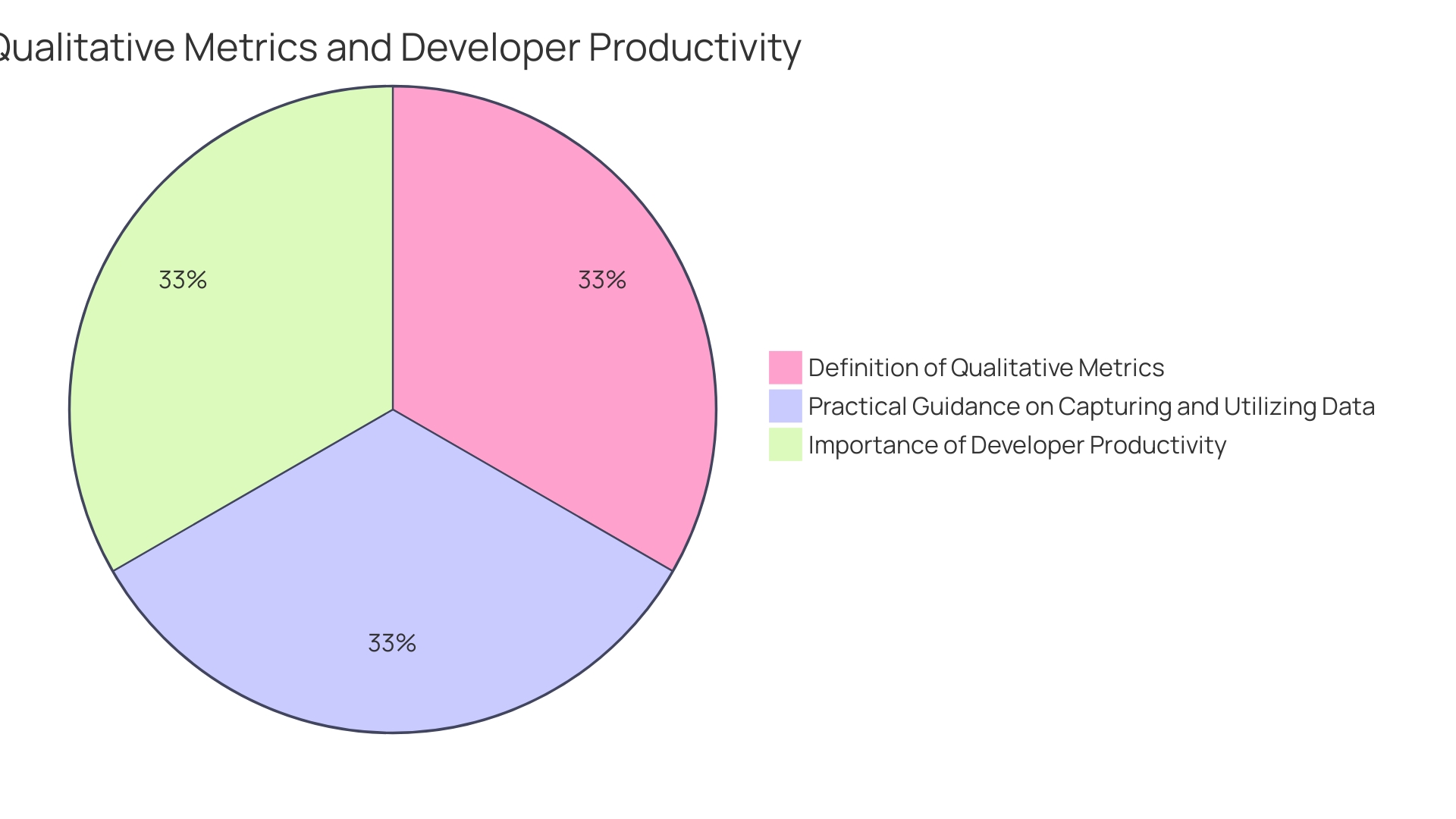
Creating a Culture of Continuous Improvement
At the heart of software development lies a critical element: code quality. M&T Bank, with its storied 165-year history, has braved the digital transformation of the banking industry by embracing Clean Code standards to ensure its software meets the highest quality and compliance levels. This dedication to excellence in code is not only about avoiding costly security breaches or financial losses; it's about maintaining a robust and efficient operational backbone in an industry where the stakes are incredibly high.
The bank's approach mirrors a broader movement within software development, where automated testing, unit testing, and Test Driven Development (TDD) are increasingly becoming standard practice. These methodologies serve to validate the correctness, security, and performance of code. Automated testing reduces the need for manual intervention, while unit testing focuses on the smallest units of code to ensure each piece functions as intended. TDD, in which tests are written prior to code, promotes a proactive approach to code quality.
But it's not just about implementing methodologies; it's about cultivating a mindset. As Gaurav Batra notes, developer productivity transcends mere code output—it encompasses collaboration, innovation, and even work-life balance. It's in this balance where continuous improvement and a culture of open communication shine, empowering teams to learn and share knowledge freely, boosting both morale and code quality.
Refactoring is another vital element of this culture. It's an ongoing process of improving code structure without altering its external behavior, ensuring the codebase remains clean, manageable, and primed for future development. In the words of industry leaders, ideation and product thinking play a crucial role in determining what features to build and refine, aligning with the overarching vision and strategy.
The importance of software quality is gaining global recognition, with governments establishing frameworks and standards to safeguard against cyber threats. This evolving landscape underscores the need for developers to stay agile, leveraging tools like AI pair-programming assistants that have shown to significantly benefit productivity across all developer levels.
The journey toward high-quality, efficient, and secure code is continuous. It's not just about the tools or methodologies—it's about fostering an environment that prizes learning, collaboration, and a commitment to excellence. In doing so, development teams can achieve a state of perpetual readiness, ensuring that their software not only meets today's standards but is prepared for tomorrow's challenges as wells
Conclusion
Code Quality Assurance is crucial in software development, ensuring code meets high standards of security and maintainability. M&T Bank's commitment to Clean Code principles exemplifies the importance of mitigating risks and costs associated with software vulnerabilities in the banking sector.
A comprehensive Code Quality Assurance strategy is essential for reliable and error-free applications. Different code review techniques, such as peer review and automated analysis, contribute to improving software performance and customer satisfaction.
Technical aspects of code review, including readability, maintainability, performance, and security, are crucial for effective code. Adhering to coding standards and best practices ensures consistency and reduces errors.
Code quality standards provide a framework for successful software development, guiding developers through rules and practices. Best practices for code readability, such as using descriptive names and reducing code duplication, enhance maintenance and teamwork.
Collaboration and continuous improvement foster a culture of excellence in software development. Measuring success through metrics like code coverage and user satisfaction helps gauge the effectiveness of code quality assurance.
In conclusion, Code Quality Assurance is vital for secure, reliable, and efficient software. By implementing these practices, developers can create software that meets high standards, reduces risks, and enhances customer satisfaction.
Improve your software performance and customer satisfaction with our code review techniques!
Frequently Asked Questions
What is Code Quality Assurance?
Code Quality Assurance (QA) is a systematic approach in software development that ensures applications are reliable, maintainable, and free from errors. It involves detecting and addressing defects before the software release to maintain high standards of security and performance.
Why is Code Quality Assurance important in the banking sector, such as at M&T Bank?
In the banking sector, high-quality code is crucial due to stringent security and regulatory demands. Institutions like M&T Bank use Code Quality Assurance to maintain rigorous coding standards, which is essential to minimize risks and costs associated with software vulnerabilities.
What are the different types of software testing mentioned in the article?
The article mentions automated testing, unit testing, and Test-Driven Development (TDD). Automated testing is conducted by software without manual intervention, unit testing focuses on the smallest units of code, and TDD is a method where tests are written before code is created.
What is the role of code review in Code Quality Assurance?
Code review is a critical examination of the codebase to ensure the software's quality and effectiveness. It involves evaluating code readability, maintainability, performance, and security, as well as checking for adherence to coding standards and best practices.
What are some code review techniques used in software development?
Key code review methods include peer code review, automated code review, and formal code inspection. These techniques help developers ensure the highest standards are met and foster an environment of continuous improvement.
How does documentation contribute to code quality?
Documentation, which includes written text, comments, or other materials, helps developers, users, and stakeholders understand a software's functionality and design. Well-documented code eases the onboarding of new developers and aligns with rigorous standards and compliance in regulated industries.
What are coding conventions and style guides, and why are they important?
Coding conventions and style guides are a set of rules that govern the structural and stylistic aspects of coding. They establish a common language among developers, enhancing collaboration and comprehension of the codebase.
What are code review checklists, and how do they assist developers?
Code review checklists are a tool used by developers to perform thorough assessments of code quality. They provide specific criteria and questions to evaluate the code against, ensuring no vital aspect is overlooked during code evaluations.
Can AI tools like GitHub Copilot improve code quality?
AI tools like GitHub Copilot can enhance developer productivity by offering real-time code suggestions. This can improve individual productivity and aid in maintaining code quality through consistent and accurate suggestions.
What is the importance of fostering collaboration and continuous improvement in code quality?
Collaboration and continuous improvement are essential for maintaining high code standards, especially in sectors with intense digital transformation like banking. This involves participating in code reviews, knowledge sharing, and adhering to clean and secure code practices.
How do developers measure the success of their code quality assurance measures?
Success in code quality assurance can be measured using various indicators such as code coverage, bug resolution time, and code complexity metrics like Cyclomatic Complexity (CYC). User satisfaction is also a crucial performance indicator.
What is the significance of creating a culture of continuous improvement in software development?
Cultivating a culture of continuous improvement involves implementing QA methodologies, encouraging open communication, and embracing learning. This ensures software not only meets current standards but is also prepared for future challenges.




